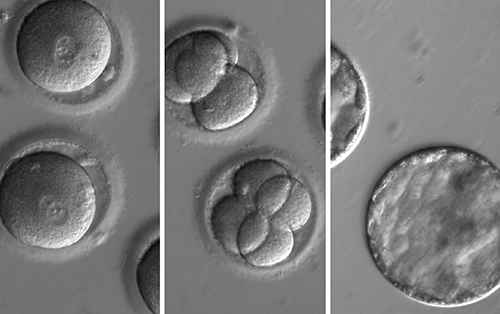Cardiovascular Gene Therapy Research

A collaborative effort between the Center for Embryonic and Gene Therapy and the Knight Cardiovascular Institute, our research teams are focused on correcting disease-causing gene mutations and preventing them from passing to future generations.
Current research
Scientists at OHSU have developed a technique using the gene-editing tool CRISPR to target a mutation in nuclear DNA that causes hypertrophic cardiomyopathy, a common genetic heart disease condition which can cause sudden cardiac death and heart failure. The research, published Aug. 2, 2017 in the journal Nature, demonstrates a new method for repairing a disease-causing mutation and preventing it from being inherited by succeeding generations. This is the first time scientists have successfully tested the method on donated clinical-quality human eggs.
"Every generation on would carry this repair because we've removed the disease-causing gene variant from that family's lineage," Shoukhrat Mitalipov, Ph.D., director of the Center for Embryonic Cell and Gene Therapy at OHSU. "By using this technique, it's possible to reduce the burden of this heritable disease on the family and eventually the human population."
Initial research has focused on hypertrophic cardiomyopathy because it is the leading cause of cardiac death and affects an estimated 1 in 500 people, however the technique could potentially apply to thousands of inherited genetic disorders affecting millions of people worldwide. Researchers are currently focused on improving the science involved in germline gene correction to ensure efficacy and safety before advancing this work to human clinical trials.
Our research closely adheres to guidelines established by OHSU’s Institutional Review Board and additional ad-hoc committees established for scientific and ethical review. Further, the work is consistent with recommendations by the National Academy of Sciences and the National Academy of Medicine joint panel on human genome editing.